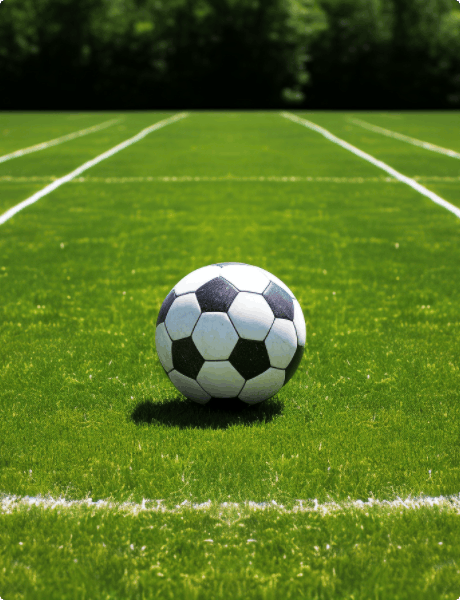
- Afrikaans
- Arabic
- Belarusian
- Bengali
- Czech
- Danish
- Dutch
- English
- Esperanto
- Estonian
- Finnish
- French
- German
- Greek
- Hindi
- Hungarian
- Icelandic
- Indonesian
- irish
- Italian
- Japanese
- kazakh
- Rwandese
- Korean
- Kyrgyz
- Lao
- Latin
- Latvian
- Malay
- Mongolian
- Myanmar
- Norwegian
- Persian
- Polish
- Portuguese
- Romanian
- Russian
- Serbian
- Spanish
- Swedish
- Tagalog
- Tajik
- Thai
- Turkish
- Turkmen
- Ukrainian
- Urdu
- Uighur
- Uzbek
- Vietnamese
Installing Artificial Grass Over Clay Soil for Optimal Results and Durability
Nov . 30, 2024 03:55 Back to list
Laying Artificial Grass on Clay Soil A Comprehensive Guide
Artificial grass has gained immense popularity over the years as a low-maintenance and aesthetically pleasing alternative to natural lawns. One challenge that many homeowners face, especially those with clay soil, is the proper installation of synthetic turf. Clay soil poses unique challenges due to its density, drainage issues, and tendency to compact. However, with the right preparation and techniques, laying artificial grass on clay soil can be an achievable and rewarding project.
Understanding Clay Soil
Before diving into the installation process, it helps to understand the characteristics of clay soil. Clay is composed of very fine particles that pack tightly together, making it dense and relatively impermeable. This can lead to poor drainage, causing water to pool on the surface after heavy rain. Moreover, clay soil can become extremely hard when dry or create muddy conditions when wet. These characteristics can complicate the installation of artificial grass, which requires proper drainage and a stable base.
Preparing the Site
1. Evaluate the Area Begin by evaluating the area where you intend to lay artificial grass. Check for any improper drainage, existing vegetation, or debris. If water tends to pool in certain areas, consider addressing the drainage issues before proceeding.
2. Clear the Area Remove any existing grass, weeds, or plants from the area. This step is crucial as it prevents unwanted growth through the artificial grass later on.
3. Excavate the Topsoil Depending on the intended height of the artificial grass, you may need to remove a layer of clay soil. Typically, excavating 2 to 4 inches should suffice, as this will provide enough depth for base materials and allow for proper drainage.
Installing a Base Layer
4. Add a Drainage Layer Since clay soil is known for its poor drainage capabilities, it is essential to install a proper drainage layer. A mixture of crushed rock or gravel (typically 3/4 inch) is ideal. Spread this layer evenly across the excavated area, ensuring a uniform thickness of about 2 to 3 inches.
5. Compact the Base Using a plate compactor or roller, compact the gravel layer carefully. This step is critical as it creates a solid foundation for the artificial grass and helps prevent sinking over time.
laying artificial grass on clay soil

6. Add a Leveling Layer Following the drainage layer, you may want to add a layer of sharp sand (about 1 inch). This layer will aid in leveling the surface and provide additional drainage. Rake the sand evenly and use a straight edge to ensure that the surface is level and smooth.
Installing the Artificial Grass
7. Rolling Out the Turf With the base layer prepared, unfold the artificial grass rolls on top of the sand. Make sure to allow the turf to acclimate for a few hours to minimize wrinkles and ensure proper alignment.
8. Cutting and Seaming Use a utility knife to cut the grass to fit the area accurately. Ensure that seams between different rolls are tight and aligned in the same direction for a more natural look.
9. Securing the Turf Use landscape staples or joining tape to secure the artificial grass in place. This will prevent the grass from shifting and maintain its appearance over time.
10. Infill Application Depending on the type of artificial grass you select, you may need to apply an infill. This can be sand, rubber granules, or a combination of both. The infill protects the turf fibers, helps them stand upright, and provides additional cushioning.
Final Touches
11. Brush and Groom Once the infill is applied, use a stiff bristle broom to brush the turf fibers upright. This will enhance the overall appearance of the lawn and help distribute the infill evenly.
12. Water the Area Finally, lightly mist the artificial grass to settle the infill and remove any dust or debris from the surface.
Conclusion
Laying artificial grass on clay soil may seem daunting, but with proper preparation and attention to detail, it can transform a challenging landscape into an attractive and functional green space. With the right materials and techniques, you can enjoy the benefits of artificial grass without the maintenance hassles associated with natural lawns, even on clayey terrains. Whether for a backyard, playground, or sports field, artificial grass provides a versatile solution that can thrive in various conditions.
-
The Benefits of Artificial Turf for Indoors
NewsJul.15,2025
-
How Artificial Grass Suppliers Ensure Quality Products
NewsJul.15,2025
-
Artificial Grass and Pets: A Space for Relaxation
NewsJul.08,2025
-
Balcony & Outdoor Decoration with Artificial Grass
NewsJul.08,2025
-
Best Indoor Artificial Grass for Home
NewsJul.07,2025
-
Best Pet Turf for Dogs: Safe & Durable Artificial Grass Options
NewsJul.07,2025
Products categories









